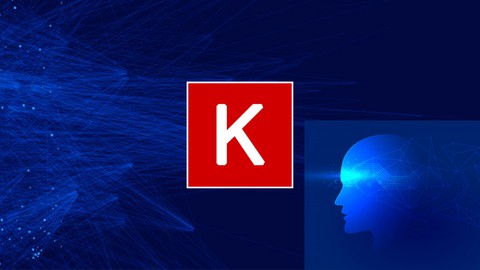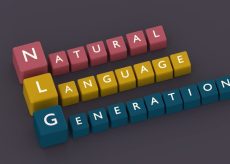Deep Learning with Keras


Price: 199.99$
A warm welcome to the Deep Learning with Keras course by Uplatz. Keras is an open-source library of neural network components written in Python. Keras is capable of running atop Tensor Flow, Theano, Plaid ML and others. The library was developed to be modular and user-friendly. Keras enables fast experimentation through a high level, user-friendly, modular and extensible API. Keras can also be run on both CPU and GPU. Keras was developed and is maintained by Francois Chollet and is part of the Tensor Flow core, which makes it Tensor Flow preferred high-level API. Comprised of a library of commonly used machine learning components including objectives, activation functions, and optimizers, Keras’ open-source platform also offers support for recurrent and convolutional neural networks. Additionally, Keras offers mobile platform development for users intending to implement deep learning models on smartphones, both i OS and Android. Keras is essentially an API designed for machine learning and deep learning engineers and follows best practices for reducing cognitive load. Keras offers consistent & simple APIs, minimizes the number of user actions required for common use cases, and provides clear & actionable error messages. It also supports extensive documentation and developer guides. It is made user-friendly, extensible, and modular for facilitating faster experimentation with deep neural networks. It not only supports Convolutional Networks and Recurrent Networks individually but also their combination Why do we need Machine Learning libraries such as Keras?Machine learning uses a variety of math models and calculations to answer specific questions about data. Examples of machine learning in action include detecting spam emails, determining certain objects using computer vision, recognizing speech, recommending products, and even predicting commodities values years in the future. The calculations implicit in machine learning and deep learning are very complicated to set up to ensure correct output (answers). A variety of machine learning libraries have emerged to help navigate these complexities. With these options, new folks can start getting into data science easily. Some of the most popular machine learning libraries include: Tensor Flow Kerassci Kit learn Theano Microsoft Cognitive Toolkit (CNTK)Uplatz provides this comprehensive course on Deep Learning with Keras. This Keras course will help you implement deep learning in Python, preprocess your data, model, build, evaluate and optimize neural networks. The Keras training will teach you how to use Keras, a neural network API written in Python. This Keras course will show how the full implementation is done in code using Keras and Python. You will learn how to organize data for training, build and train an artificial neural network from scratch, build and fine-tune convolutional neural networks (CNNs), implement fine-tuning and transfer learning, deploy models using both front-end and back-end deployment techniques. Deep Learning with Keras – Course Syllabus1. Introduction to Deep Learning & Keras What is deep learning?What is ANN?Introduction to Kerasa) Overview of Kerasb) Features of Kerasc) Benefits of Keras Keras Installation2. Keras – Models, Layers and Modules Keras Modelsa) Sequential Modelb) Functional APIKeras Layersa) Dense Layersb) Dropout Layersc) Convolution Layersd) Pooling Layers Keras Modules3. Keras – Model Compilation, Evaluation and Prediction Loss Optimizer Metrics Compile the model Model Training Model Evaluation Model Prediction4. Life-Cycle for Neural Network Models in Keras Define Network Compile Network Fit Network Evaluate Network Make Predictions5. Building our first Neural Network with Keras(Building a Multilayer Perceptron neural network)Load Data Define Keras Model Compile Keras Model Fit Keras Model Evaluate Keras Model Make Predictions6. Building Image Classification Model with Keras What is Image Recognition (Classification)Convolutional Neural Network (CNN) & its layers Building Image Classification Model (step by step)Key Features of Keras Keras is an API designed for humans Focus on user experience has always been a major part of Keras Large adoption in the industry Highly Flexible It is a multi backend and supports multi-platform, which helps all the encoders come together for coding Research community present for Keras works amazingly with the production community Easy to grasp all concepts It supports fast prototyping It seamlessly runs on CPU as well as GPUIt provides the freedom to design any architecture, which then later is utilized as an API for the project It is really very simple to get started with Easy production of models actually makes Keras special Easy to learn and use







uk imported cars
I was just looking for this info for some time. After six hours of continuous Googleing, at last I got it in your web site. I wonder what’s the Google’s problem that doesn’t rank this kind of informative web sites closer to the top. Normally the top websites are full of garbage.